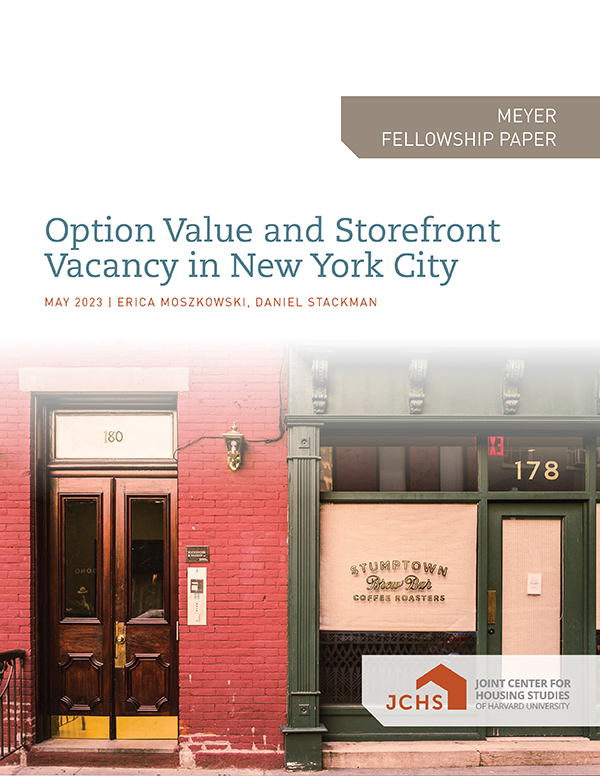Option Value and Storefront Vacancy in New York City
Why do storefronts remain empty for more than a year in some of the world’s highest-rent retail districts? Landlords with vacancies derive option value from two sources of uncertainty. First, increasing downstream retail demand may drive up market rents tomorrow. Second, different tenants may have different willingness to pay for the same space, creating an incentive for landlords to wait for a particularly high rent offer. High move-in costs, search frictions, and high contract dissolution costs for landlords amplify this option value. We estimate the model parameters by matching quarterly vacancy rates, lease-up rates, and tenant exit rates from a comprehensive, high-frequency storefront tracking service, combined with micro data on commercial leases. In a counterfactual exercise, we find that reducing the variance of the match quality distribution by 50% reduces long-run vacancy rates by 33% on average, while reducing the variance of the aggregate state variable has almost no effect. Finally, we use the estimated model to quantify the impact of a retail vacancy tax on long-run vacancy rates, average rents, and social welfare. Vacancies would have to generate negative externalities of $18.72 per square foot per quarter (about 30% of average rents) to justify a 1% vacancy tax on assessed property values.

